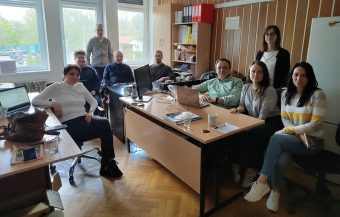
The spongy moth is one of the most dangerous forest pests in Europe, Asia, North America, and Africa. This invasive pest can weaken and destroy trees by defoliating, i.e. destroying the leaves. A spongy moth larva can eat up to one square meter of foliage per day. During their infestation, which usually occurs at regular intervals of three to five years, complete loss of foliage can occur over a wide geographic area.
From 1862 to 2018, there were 18 infestations of spongy moths in Serbia, some of which had the proportions of a natural disaster, such as those that occurred from 1995 to 1998, when spongy moths were found on over 500,000 hectares of forests and orchards. Another serious threat to forests and crops comes from various species of Phytophthora that attack plant roots. Phytophthora species are oomycetes, relatives of algae and fungi-like organisms. Phytophthora many plant species. Billions of euros are spent annually to alleviate the consequences of these diseases. In addition to the direct economic damages, there are far greater environmental damages, which are difficult to calculate.
IN FOCUS:
- CARBON FARMS MAKE AGRICULTURE MORE SUSTAINABLE
- WALK, RECYCLE, EARN TOKENS
- ENVIRONMENTAL LABELLING AND ECO-LABELS
A team of scientists from the Materials Department of the Institute for Multidisciplinary Research and the Faculty of Forestry, University of Belgrade, headed by Goran Branković PhD, scientific advisor at the Institute for Multidisciplinary Research, University of Belgrade, under the auspices of the PestFreeTree project, deals with the integral protection of woody plant species by applying ecologically acceptable biopesticides against pests that attack the leaves (spongy moths) and the root (phytophthora).
PestFreeTree, a project financed by the Republic of Serbia Science Fund as part of the Green Program of Science and Business Cooperation, focuses on the development of new natural and environmentally friendly biopesticides that can be used in forests, parks, nurseries, and orchards and thus protect the environment from unwanted pests, as well as soil, water and air pollution caused using conventional pesticides. The project’s goals align with the relevant European Commission strategy, which, in June 2022, called for a 50 per cent reduction in the use of chemical pesticides by 2030.
Our solution is based on the recent patent that was developed initially for active packaging. Still, the exact mechanism of encapsulating active components in a biopolymer matrix can be applied to biopesticide formulations. All active components will be essential oils and plant extracts that exhibit repellent or have lethal effects on targeted pests.
Prepared by PestFreeTree project team
Read the story in the new issue of the Energy portal Magazine NATURE CONSERVATION.

